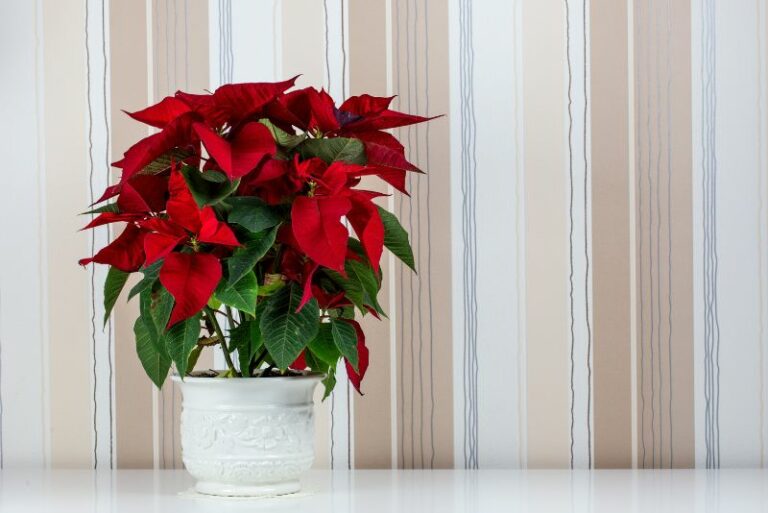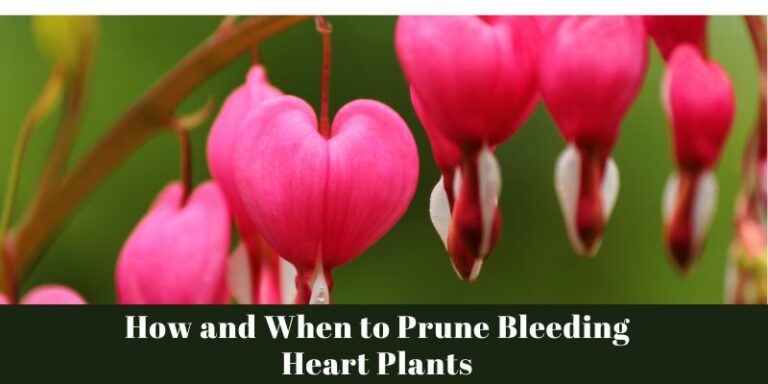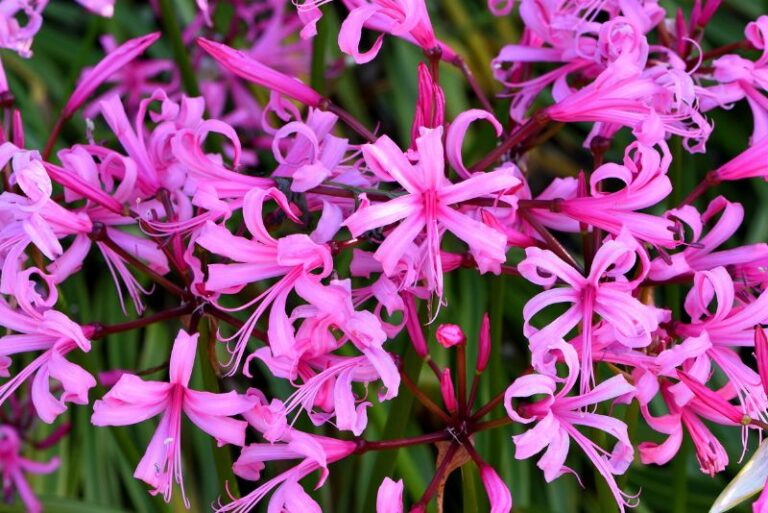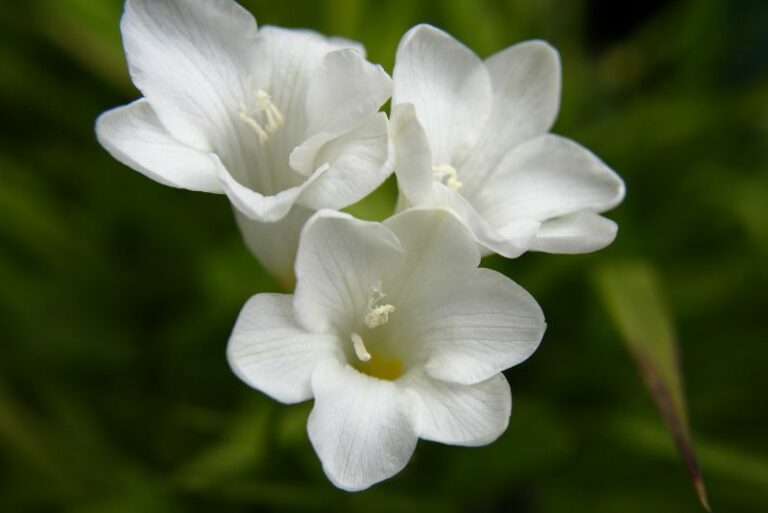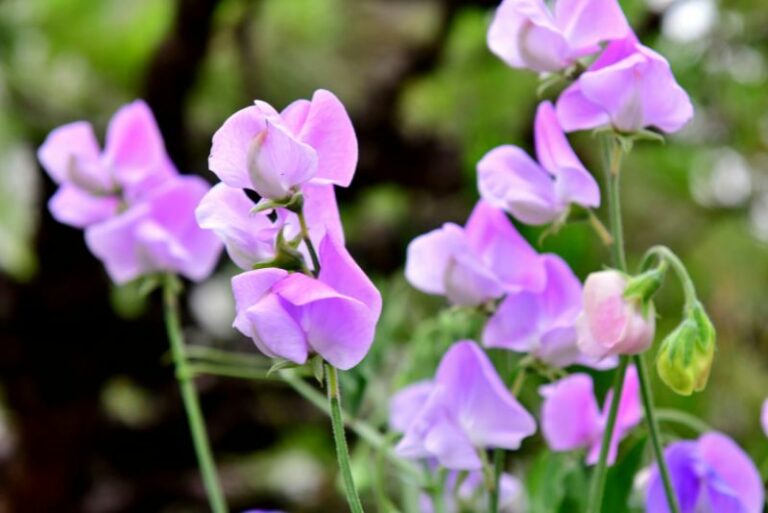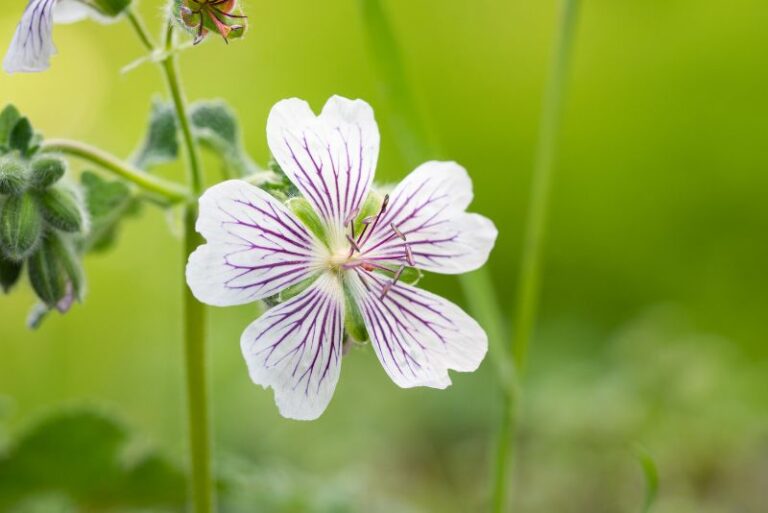How to Plant, Grow and Care For Verbena
Verbena is a beautiful flowering plant that is perfect for adding color and vibrancy to any garden. With over 250 species, Verbena offers a wide range of options for gardeners looking to add this lovely plant to their repertoire. Whether you have a large backyard or are limited to a balcony or windowsill, there’s a verbena variety that will thrive in your space. In this guide, we’ll cover everything you need to know about how to plant, grow and care for verbena so that it can flourish in your garden or indoor space.
We will begin by discussing the different types of verbena and their unique characteristics, as well as the best time to plant them. Then, we’ll dive into the step-by-step process.
Verbena Overview
Here is an overview table for Verbena:
| Attributes | Details | Planting and Care |
|---|---|---|
| Plant type | Perennial (or annual in cooler climates) | Attracts |
| Season | Spring to frost | Hardiness Zone |
| Pests | Aphids, powdery mildew | Plant with |
| Slugs Family | Not Applicable | Planting depth |
| Exposure | Full Sun | Watering Requirement |
| Diseases | Powdery mildew, root rot | Don’t plant with |
| Genus | Verbena | Height |
| Maturity date | Varies, often blooms all season | |
| Maintenance | Low to moderate | |
| Species | V. bonariensis, V. rigida, etc. | |
| Growth rate | Fast | |
| Soil type | Well-drained, sandy or loamy | |
| Native area | Americas and Asia | |
| Plant Spacing | 12 – 18 inches apart |
Please note that certain details may vary depending on the specific variety of verbena. Always refer to the specific planting and care instructions provided when you purchase your plants.
All About Verbena
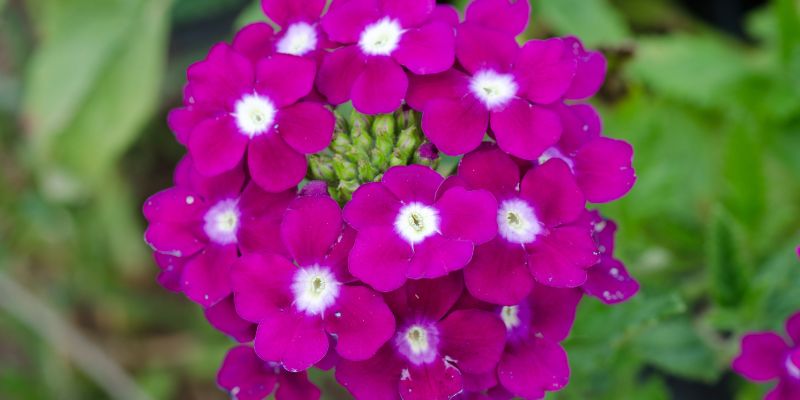
Types of Verbena
Verbena plants are mostly perennial, although some species are annual, and they vary widely in size and shape. Some common varieties include the tall and narrow Verbena bonariensis, the ground-covering Verbena canadensis, and the versatile and trailing Verbena x hybrida. Each species boasts its unique array of colors, from deep purples to bright pinks and striking reds. The Verbena rigida, for instance, has a more drought-tolerant nature and produces vibrant purple flowers.
Cultivation Needs
When it comes to cultivation, most Verbena varieties prefer full sun and well-draining soil. They are hardy in USDA zones 7-11, making them a reliable choice for a variety of climates. Verbena’s ability to attract pollinators like butterflies and bees adds a layer of reward to growing these plants.
Planting Verbena
The optimal time for planting verbena is in the late spring or early summer when the soil has warmed up. Verbena seeds can be sown directly into the ground or started indoors and then transplanted. The spacing should be about 10 to 18 inches apart, depending on the variety, allowing for ample air circulation which helps prevent common diseases.
Maintenance and Care
Regular deadheading will encourage Verbena to produce new blooms and extend the flowering season. Although Verbena is somewhat drought tolerant, consistent watering during prolonged dry spells will maintain its vigor. A light application of a balanced fertilizer can be administered in the spring to promote healthy growth and blooming.
Verbena Varieties
Exploring the diverse world of Verbena varieties is like embarking on a horticultural adventure. Each species has a unique history, often rooted in longstanding cultivation by local cultures and later spreading across continents to grace gardens worldwide. The looks of these flowering plants differ significantly from one type to another. The Verbena bonariensis stands tall, with clusters of small purple flowers that appear to float atop thin, wiry stems, giving an almost ethereal presence in the garden.
In terms of scent, Verbenas are not particularly known for strong fragrances, but the subtle, fresh aroma that some species emit is pleasing and is thought to have aromatherapeutic qualities. The Verbena canadensis provides ground-covering foliage with clusters of flowers that exhibit hues ranging from white to deep magenta. Its scent is mild, yet it can contribute to the sensory appeal of a garden, especially in the late afternoons and early evenings.
The Verbena x hybrida, a versatile hybrid, features a trailing habit that makes it ideal for hanging baskets and elevated planters. Its blooms can vary widely in color, presenting gardeners with a multitude of choices for color schemes.
Despite the variations, all Verbenas share a few commonalities. They typically have five-petaled flowers that grow in tight clusters, creating a dazzling display of color. Their propensity to attract pollinators is a unifying trait that makes them a favorite among gardeners who aim to support local wildlife and enjoy the company of buzzing bees and fluttering butterflies.
Ultimately, choosing amongst Verbena varieties comes down to personal preference and garden conditions. However, the shared beauty and ease of care across all species make Verbena a worthy and delightful addition to any garden or outdoor space.
Verbena Care Procedures
Light and Temperature Requirements for Verbena
To ensure your Verbena thrives, understanding its light and temperature needs is crucial. These vibrant flowers bask in the glory of full sun and require a minimum of eight hours of direct sunlight per day to optimally perform. The rays foster robust growth and significantly contribute to the profusion of blooms.
Light:
Verbena’s love for the sun is apparent in the brightness and longevity of its blossoms. If planted in a spot that receives partial shade, you may notice a decline in flower production and vigor. For container-grown verbena, make certain to position pots in locations that are bathed in sunlight throughout the day.
Temperature:
Verbena comes into its own in warm environments and can endure a certain degree of heat, which makes it well-suited for USDA zones 7 through 11. It’s vital to note, however, that while established plants are somewhat cold-tolerant, they flourish best when frost is not a threat. If you live in a cooler zone, consider planting verbena in a pot that can be moved indoors to escape chilly temperatures or treat it as an annual, replanting each year. Generally, verbena plants prefer ambient temperatures between 60°F and 80°F. Extreme heat can sometimes stress verbena, but as long as they are well-watered, they will generally cope with higher temperatures.
In essence, situating your Verbena to soak up the sun and providing a warm growing environment are foundational care procedures that will pave the way for a healthy, thriving plant festooned with colorful flowers that will embellish your garden from spring until the first frost.
Water and Humidity Requirements for Verbena
Understanding the delicate balance between hydration and drainage is key to maintaining the health of your Verbena plants. These flowers have specific needs when it comes to water and humidity that, when met, lead to vibrant growth and an abundant bloom.
Water:
Verbena’s preference for well-draining soil signifies its intolerance for soggy roots, making proper watering technique essential. The ideal practice is to provide a deep watering when the top inch of the soil feels dry to the touch, allowing moisture to reach the roots without making the soil waterlogged. Overhead watering should be avoided to minimize the risk of powdery mildew and other fungal diseases; instead, water at the base of the plant. During the growing season, a consistent watering schedule helps the plants establish a robust root system; however, once established, Verbena is relatively drought-tolerant and can handle periods of dry weather.
Recommendations for Watering:
- In the morning, water your Verbena to allow foliage to dry before evening, which reduces disease risk.
- Employ a drip irrigation system or soaker hose to target water delivery directly to the roots and conserve moisture.
- Adjust your watering frequency based on weather conditions; more is needed during dry, hot spells and less during cool or rainy periods.
- Always check the soil moisture before watering to avoid overwatering, which can be as harmful as under-watering.
Humidity:
Verbena plants are generally adaptable to a range of humidity levels and do not require the high humidity that some flowering plants might. However, in very high humidity conditions, where air circulation is poor, Verbena can fall victim to disease. To prevent this, ensure there is enough space between your plants for air to move freely, reducing the potential for issues like mold and mildew to take hold.
Tips to Manage Humidity for Verbena:
- Position plants in areas with good airflow or use a fan to circulate air in enclosed spaces like greenhouses.
- In regions with naturally high humidity, consider raised beds or containers to improve drainage and air circulation.
- Prune Verbena regularly to remove dead or diseased foliage and to open up the plant’s structure, promoting healthy air movement.
By providing your Verbena with just the right amount of water and managing the humidity around them, you create an environment where these stunning plants can thrive and bring joy to the garden with their vivid colors and heartwarming presence.
Soil Types and Preparation for Verbena
Verbena’s resilience is well-displayed in its ability to adapt to different soil types, yet some preparations can significantly enhance its performance and bloom quality. Here’s a detailed guide to understanding the soil preferences of Verbena and how to prepare the right foundation for your plants to thrive.
Soil Types:
Verbena is fairly versatile but prefers soil that is light, well-draining, and not too rich in organic matter. You can find success planting Verbena in sandy loam to even clay soils as long as there is proper drainage. Heavy, compacted soils are less ideal as they can hold water and lead to root rot.
Soil pH:
The optimal pH range for Verbena is slightly acidic to neutral, falling between 6.0 and 7.0. Before planting, it is wise to test the soil pH with a home testing kit or by sending a sample to a local extension service. If the pH is too high, you can lower it by incorporating sulfur into the soil. For pH that’s too low, consider adding lime to raise it.
Soil Preparation:
To prepare the soil for Verbena, start by clearing the area of weeds, rocks, and debris. Enhance drainage by working in coarse sand or fine gravel if dealing with clay-heavy soils. For soils that are sandy and dry, add some compost or well-rotted manure to increase the nutrient content slightly and improve water retention.
Steps for Preparing Soil for Verbena:
- Perform a soil test to determine the pH and modify if necessary.
- Amend heavy clay soils with organic matter like compost and perlite or coarse sand to improve drainage.
- In sandy soils, incorporate organic matter to boost nutrient levels and water retention.
- Turn the soil to a depth of 8-10 inches to allow the root system of the Verbena to penetrate deeply.
- Rake the soil surface to create a level, even bed, removing any clumps or stones.
- Plant Verbena at the same depth it was in its previous container, spacing plants 12 to 18 inches apart to ensure good air circulation.
Recommendations for Maintaining Ideal Soil Conditions:
- Mulch around Verbena with organic mulch, such as bark chips, to maintain moisture and prevent weeds.
- Avoid high nitrogen fertilizers as they can promote foliage over flowers and contribute to leggy growth.
- Ensure consistent soil moisture, especially during the first growing season, to establish a strong root system but allow the soil to dry out slightly between watering.
By managing soil conditions appropriately and monitoring pH levels, your Verbena will be set for success. Planting in the right type of soil, ensuring proper pH, and making suitable modifications will aid in developing robust Verbena plants with vibrant and prolific blooms.
Fertilizer Guide for Care of Verbena Plants
Appropriate fertilization is crucial for Verbena to flourish and produce its characteristic vibrant blooms. Verbena benefits from a balanced approach that meets its nutritional requirements without encouraging excessive foliar growth at the expense of flowers. Here’s how to approach fertilizing these vigorous plants:
Essential Nutrients:
Verbena requires a balanced supply of nitrogen, phosphorus, and potassium, typically represented in fertilizers by the NPK ratio. A general purpose 10-10-10 or 5-5-5 fertilizer offers these nutrients in equal measure. However, ensure that nitrogen levels are not disproportionately high, as this could lead to lush leaves with fewer flowers.
Fertilizer Application:
At the start of the growing season, apply a slow-release granular fertilizer around the base of the plants, which will provide a steady source of nutrients that the Verbena can access as it grows. Water the fertilizer in thoroughly after application.
Liquid Feeds:
Liquid fertilizers can also be beneficial, especially when implemented as a part of regular watering routines. These are absorbed more quickly by the plant and are particularly useful during the peak of the blooming season when plants can be fed with a diluted liquid fertilizer every two to four weeks.
Organic Options:
For gardeners who prefer organic options, well-composted manure or a seaweed-based fertilizer can provide an extensive range of nutrients. These natural alternatives release nutrients into the soil more slowly, which means plants benefit from a prolonged feed without the risk of chemical burn.
Fertilizing During the Growing Season:
As the Verbena plants settle in and start to grow actively, use a liquid fertilizer bi-weekly to encourage robust growth. This is typically when the plants are putting on a lot of green growth and have not yet fully entered their blooming period.
Caring for Fertilizer Needs in Containers:
Verbena grown in containers may need more frequent fertilizing than those in the ground due to the limited resources available in a pot. A half-strength liquid fertilizer can be applied more often, every other week, to sustain the plant’s nutritional requirements.
Fertilizer Tips for Verbena:
- Always follow the manufacturer’s recommended application rates to prevent over-fertilization.
- Cut back on fertilizing as the growing season winds down to discourage new growth that could be damaged by early frosts.
- Keep granular fertilizers away from direct contact with the plant stems to minimize the risk of chemical burn.
By following a balanced and consistent fertilizing regimen, your Verbena plants will have the nutrients they need to stay healthy, vibrant, and floriferous throughout their growing season.
Guide on Verbena Care Procedures for Repotting
Repotting Verbena plants is a crucial aspect of their care, particularly for those grown in containers. These plants may eventually outgrow their current pots or have depleted the nutrients in the soil, necessitating a move to a more spacious home. Here’s a comprehensive guide to repotting Verbena plants:
When to Repot:
- Check for signs that your Verbena needs repotting, such as roots growing through the drainage holes, slowed growth, or a noticeable decline in plant vigor.
- The best time to repot is in the early spring before new growth begins or after the blooming season is over.
Choosing the Right Pot:
- Select a new pot that is one size larger than the current one, ensuring it has adequate drainage holes to prevent waterlogging.
- Avoid a very large pot, as this can lead to excessive dampness of the soil, which can cause root rot.
Soil Selection:
- Use a well-draining potting mix suitable for flowering plants. It should be light and airy to allow roots to spread easily.
- Incorporate perlite or coarse sand into the mix if extra drainage is needed.
Steps for Repotting Verbena:
- Water your Verbena plant a day before repotting to ensure that the soil and roots are moist, easing the transition.
- Gently loosen the plant from its current pot, being careful not to damage the roots as you remove it.
- Inspect the root ball and trim any dead or excessively long roots with sterilized pruning shears.
- Fill the new pot partially with fresh potting mix, then position the plant so that the top of the root ball is about an inch below the rim.
- Add more potting mix around the sides, ensuring the roots are covered but not compressed. Firm the soil gently to remove air pockets.
- Water the newly potted Verbena generously to settle the soil, then let it drain completely.
Aftercare Post-Repotting:
- Place the repotted Verbena in a location where it will receive adequate sunlight, as per its usual needs.
- Monitor soil moisture closely in the first few weeks and water as needed to maintain slight dampness without over-saturating.
- Delay fertilizing for several weeks to avoid stressing the plant as it adjusts to its new container and soil.
Tips for Successful Repotting:
- If repotting multiple plants, sterilize your tools between each to prevent the spread of any potential diseases.
- Choose a high-quality potting mix and avoid using garden soil, which may contain pathogens or pests.
- Support the stems and foliage as needed to prevent damage during the repotting process.
By carefully following these steps, your Verbena will quickly acclimate to its new container and continue to thrive, providing you with delightful blooms and verdant foliage throughout the growing season.
Guide on Verbena Propagation
Propagation of Verbena can be accomplished in several ways: through division, from cuttings, or from seeds. Here’s a detailed guide on how to propagate Verbena using each of these methods:
Propagation by Division:
- Division should be done in the spring or early fall when the plant is dormant.
- Carefully dig up the entire Verbena plant, making sure to keep the root ball intact.
- Using a sharp spade or knife, divide the root ball into sections, each with an equal amount of roots and shoots.
- Replant each division immediately, ensuring proper spacing and watering thoroughly.
Propagation from Cuttings:
- Take cuttings in late spring or early summer from healthy, non-flowering stems.
- Cut about 4 to 6 inches of stem, with several leaves, using a sharp, clean knife.
- Remove the lower leaves, leaving a few at the top, and dip the cut end into a rooting hormone powder or gel.
- Plant the cutting in a pot filled with a mix of peat and perlite, ensuring the leaf nodes are covered.
- Keep the soil consistently moist and cover with a plastic bag or dome to retain humidity.
- Once new growth appears, indicating successful rooting, acclimate the cutting to normal conditions before planting outside.
Propagation from Seeds:
- Sow Verbena seeds in a pot or flat filled with a well-draining, sterile seed-starting mix.
- Cover lightly with soil and keep the container in a warm, bright location.
- Keep the soil consistently moist but not waterlogged until seedlings emerge within two weeks.
- Once the plants have several sets of leaves, transplant them into individual pots and continue to grow until they are large enough for outdoor planting.
By propagating your Verbena plants, you can expand your garden or share the beauty of these stunning flowers with others. With a bit of patience and care, you can easily propagate Verbena using any of these methods as desired.
Guide on Verbena Care Procedures for Pruning
Pruning is a vital maintenance practice that keeps Verbena plants healthy, controls their shape, and encourages vigorous flowering. For optimal results, follow this meticulous guide on pruning Verbena:
Reasons for Pruning Verbena:
- To remove dead or diseased foliage and stems, which can harbor pests and diseases.
- To promote fuller growth and prevent legginess by encouraging branching.
- To enhance air circulation within the plant, reducing the likelihood of fungal infections.
- To extend the blooming period by deadheading spent flowers.
When to Prune:
- Conduct light, regular pruning throughout the growing season to maintain shape and remove spent blooms.
- Perform more extensive pruning in early spring to stimulate new growth and after the first flush of flowers to encourage a second blooming.
Tools Needed for Pruning:
- Use sharp, clean pruning shears or scissors, sterilizing them before use to prevent disease spread.
- Wear gloves to protect your hands from the plant’s delicate stems and potential skin irritants.
Steps for Pruning Verbena:
- Identify any dead, diseased, or damaged stems and cut these back to the base of the plant to promote healthy growth.
- Trim leggy stems back to a node or set of leaves, which will stimulate the plant to branch out and become bushier.
- Remove spent flower heads by snipping them just above a leaf node or bud, which encourages the plant to produce more blooms.
- Thin out crowded areas by selectively removing some stems at the base to improve air circulation and sunlight penetration.
- Reshape the plant if necessary, by evenly trimming the foliage to maintain a pleasing form.
Aftercare Post-Pruning:
- Provide the pruned Verbena with adequate water to recover from the stress of pruning and to support new growth.
- Apply a light application of balanced, slow-release fertilizer to provide the necessary nutrients for recovery and development.
- Observe the plant in the days following pruning for any signs of stress or disease and address these promptly.
Tips for Successful Pruning:
- Do not over-prune, as this can stress the plant and potentially reduce flowering; aim to remove no more than one-third of the plant’s mass at a time.
- Prune on a dry day to reduce the chance of disease transmission through the freshly cut stems.
- Be cautious not to damage new buds or growth during the pruning process to ensure the continued vitality of the plant.
By adhering to these pruning methods, your Verbena plants will sustain robust growth habits, avert potential diseases, and showcase an abundance of blooms, enhancing the aesthetic appeal of your garden throughout the growing season.
Troubleshooting
Troubleshooting Verbena plants is crucial for maintaining their health and ensuring a showy display of blooms. Gardeners often encounter issues due to environmental stressors, pests, and diseases which can affect the plant’s vigor. Here, we identify common problems and provide solutions to help your Verbena thrive.
Growing Problems
- Lack of Flowering: Verbena may fail to produce flowers if they do not receive enough sunlight. Ensure plants receive full sun for the best flowering results. Overfertilization can also lead to lush foliage at the expense of blooms. Use a balanced fertilizer sparingly to encourage flowers.
- Leggy Growth: This can occur when Verbena is either over-fertilized or under-sunlit, leading to weak, spindly stems. Pruning leggy stems back to a leaf node promotes bushier growth.
- Stunted Growth: Poor soil drainage or compacted soil can lead to stunted Verbena plants. Improve soil conditions by incorporating organic matter or sand to enhance drainage.
Pests
- Spider Mites: These tiny arachnids cause yellowing or stippling of leaves. Increase humidity with misting, or use insecticidal soap or neem oil for severe infestations.
- Aphids: These small, sap-sucking insects can be dislodged with a strong stream of water or controlled with insecticidal soaps or neem oil.
- Whiteflies: These pests are known for sucking plant juices and can be reduced by vacuuming the insects from the plant or using sticky traps.
Diseases
- Powdery Mildew: A fungal disease that appears as a white powdery substance on leaves and stems. To avoid this, water plants at the base to keep foliage dry, ensure good air circulation, and apply a fungicide if necessary.
- Botrytis Blight: This fungus causes gray mold on flowers, leaves, and stems, particularly in humid conditions. Remove affected parts and apply a fungicide. Ensure the plants have proper air circulation.
- Root Rot: Overwatering or poor drainage can lead to root rot. If the plant seems waterlogged and wilting, check the roots. Healthy roots should be firm and white. Cut away any dark or mushy roots and repot in fresh soil with proper drainage.
By monitoring your Verbena plants regularly and addressing issues promptly, you can maintain their health and enjoy their vibrant colors and lively blooms all season long. Remember to always follow the specific label instructions when applying any treatment to your plants.
Frequently Asked Questions
How often should I water my Verbena plants?
Verbena plants prefer consistent moisture but do not tolerate soggy soil. Water them when the top inch of soil feels dry to the touch, typically once a week, but this can vary depending on climate and weather conditions.
Can Verbena grow in pots?
Yes, Verbena can thrive in pots. Ensure the container has adequate drainage holes, and use a high-quality potting mix. Potted Verbena may require more frequent watering than those in the ground.
What is the best way to propagate Verbena?
Verbena can be propagated through stem cuttings or by dividing the plant. Take a cutting from a non-flowering stem, remove the lower leaves, and plant it in a moist soil medium. Division should be done in the spring or fall.
Is Verbena deer-resistant?
Verbena is often considered deer-resistant due to its fragrant foliage. While no plant is completely deer-proof, Verbena is less likely to be a primary food source.
Does Verbena attract pollinators?
Yes, Verbena is known for attracting pollinators such as bees, butterflies, and hummingbirds, making it a great plant for a pollinator-friendly garden.

